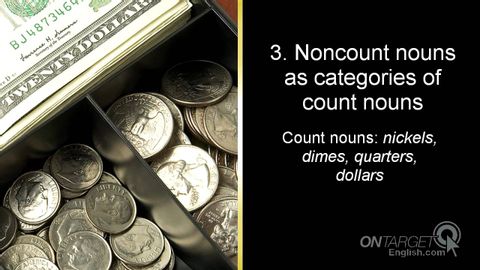
Subtitles & vocabulary
Introduction to English count and noncount nouns
00
阿多賓 posted on 2013/11/21Save
Video vocabulary
form
US /fɔrm/
・
UK /fɔ:m/
- Noun
- Sports team or person's current winning record
- Document you complete when making an application
- Transitive Verb
- To organize something such as a club or group
- To develop; to come into a shape or substance
A1TOEIC
More category
US /ˈkætɪˌɡɔri, -ˌɡori/
・
UK /ˈkætəgəri/
- Noun
- Groups of things that are similar in some way
B1
More count
US /kaʊnt/
・
UK /kaʊnt/
- Verb (Transitive/Intransitive)
- To add things together to find the total number
- To matter or be important
- Countable Noun
- Number of things added together, e.g. votes
- With the number of crimes, knockouts, as stated
A2
More language
US /ˈlæŋɡwɪdʒ/
・
UK /ˈlæŋgwɪdʒ/
- Noun (Countable/Uncountable)
- Words or signs used to communicate messages
- A specific system for communication, such as English or French.
A1TOEIC
More Use Energy
Unlock All Vocabulary
Unlock pronunciation, explanations, and filters
